VISIT THE ACROPOLIS IN ATHENS [FULL GUIDE: PRICES, TICKETS, TIPS, ETC.]
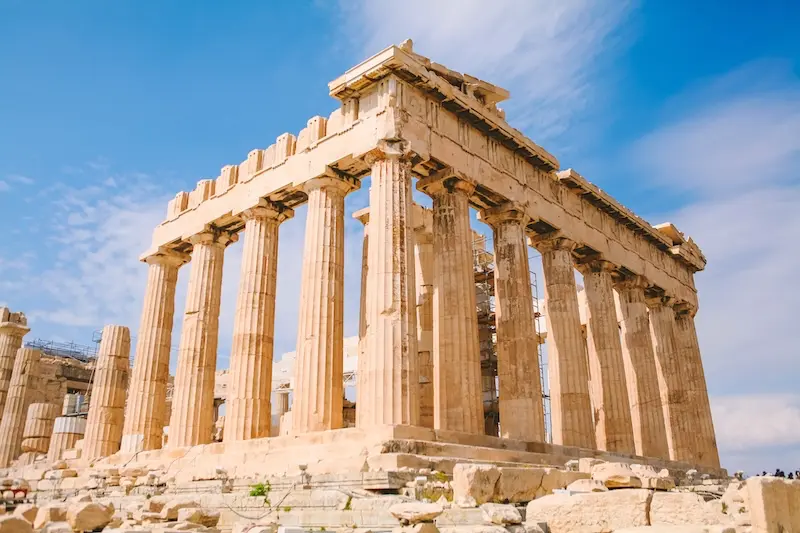
How to Visit the Acropolis & Parthenon in Athens? What You Need to Know Before Visiting the Acropolis?
Are you going to Greece? Don’t miss out on visiting the Acropolis of Athens: here is our full guide!
The Acropolis appears in all the photos of trips to Athens, we see it whenever Greece is mentioned: the Acropolis of Athens immediately evokes the ruins of the Parthenon, proudly enthroned above the districts of the modern Greek capital.
This place is one of the most visited sites in the world, listed as a UNESCO world heritage site!
But the Acropolis of Athens is much more than a pile of ruins from ancient times: it is a rocky plateau raised to an altitude of 156 meters, extended over 300 meters in length and 85 meters in width, over a total area of 3 hectares.
In a Nutshell:
– The Acropolis in Athens is open every day, from 8 a.m. to 5 p.m. The monument closes at 3 p.m. on certain public holidays.
– It takes at least 2 hours to complete the visit
– It is preferable to buy tickets online in order to skip the long queue.
– To get to the Acropolis, you can access it on foot, it’s a 15-minute walk from Syntagma Square. By metro, stop at the “Acropoli” station. By bus, with lines 1, 5, 15, 040, 230.
Read Also:
- VISIT THE PANATHENAIC STADIUM IN ATHENS
- 10+ AWESOME THINGS TO DO IN MYKONOS
- 15 BEST THINGS TO DO IN PAROS
- 25 BEST THINGS TO DO IN SANTORINI
1. The Acropolis of Athens: presentation and history
The Acropolis in Athens takes us back to the 5th century BC. Following the Persian Wars against the Persian Empire, the Athenians were forced to abandon their city, and the Persian army took the opportunity to sack the city during their exile.
The Acropolis, at the beginning of the 5th century BC

The Acropolis, at the beginning of the 5th century BC, consists of an old temple – dedicated to the city’s protective goddess, Athena -, at the foot of which the Greeks organized ritual processions called “Great Panathenaia”. “.
Following the sacking of the fortifications by the Persian king Xerxes I (-519;-475), the Athenians undertook to rebuild the Old Temple. The Greek cities, still threatened by the Persian Empire, joined forces to create the League of Delos, within which Athens enriched itself by imposing a tax to ensure the protection of neighboring cities, including Sparta.
The symbol of democracy
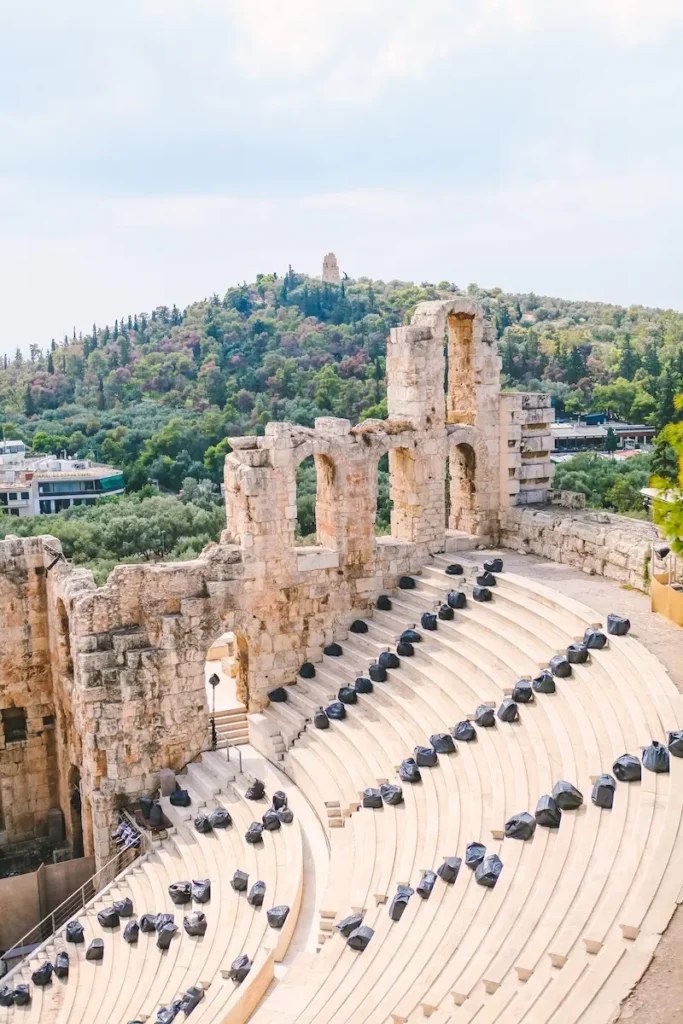
The war against the Persians ended in -449, that against Sparta in -446: it was the golden age of Athens when peace allowed it to dominate ancient Greece in the field of arts, architecture, culture and philosophy. Socrates, Plato, Thucydides, Sophocles and even Euripides lived in this sumptuous era. The Acropolis became symbol of democracy, where citizens came to the Acropolis to debate and vote, with the exception of women, metics, the poor, traders, artisans and slaves.
The Parthenon became the symbol of Athenian power
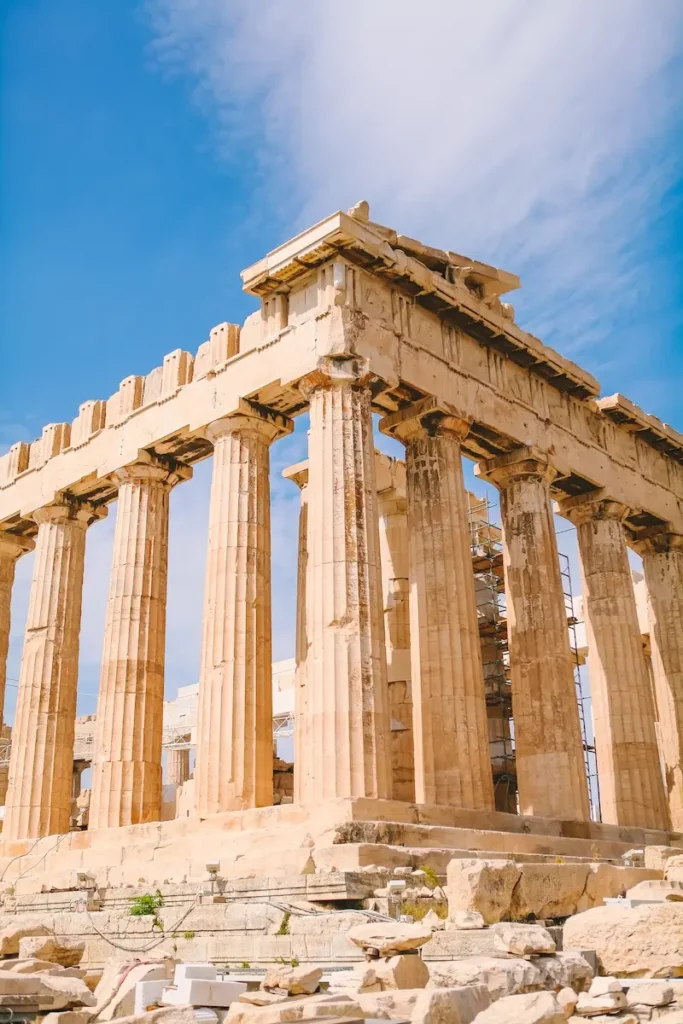
The Parthenon became the symbol of Athenian power, under the leadership of Pericles (-494;-429). Over the centuries, the monuments of the Acropolis of Athens suffered the curses of successive empires (Alexander the Great, Roman Empire, Christianity, Byzantine Empire, Ottoman Empire, Venetians): in 1687, Venetian troops massively bombarded the Parthenon.
The Parthenon became a church (6th century), a mosque (15th century) before becoming an archaeological and tourist site in the 20th century, after more than 2000 years of pillaging.
2. What to see and do at the Acropolis of Athens?

Visiting the Acropolis in Athens allows you to see many historical monuments:
- The Propylaea, the “entrance door” to the sanctuary
- The Erechtheion
- The Parthenon
- The Theater of Dionysus
Visiting the Acropolis of Athens also allows you to see certain ruins:
- The Odeon of Herodes Atticus
- The sanctuary of Asclepius
- The Odeon of Pericles
- Themistocles’ wall
- The temple of Rome and Augustus
- The statue of Athena Promachos

When visiting the Acropolis, you will start with the Propylaea, the entrance to the site via the steep slope and stairs (restoration in progress). Continue to the Parthenon, built between 447 and 432 BC. J-C (the oldest monument on the site).
Then, move on to the Temple of Athena, and finish with the Erechtheion, with its statues of the Caryatids. Spend a moment of meditation on the Agora, to imagine yourself in a toga debating the laws.
Don’t miss the Hephaestus, a temple dedicated to Hephaestus, the best preserved ancient monument in the city. On the southeastern slope of the Acropolis in Athens, the Theater of Dionysus, the cradle of Greek tragedy, is worth seeing. At the foot of the plateau, visit the Acropolis Museum. The Philopappos Hill allows you to immortalize in photos a superb view of the Acropolis.
3. How to visit the Acropolis of Athens?


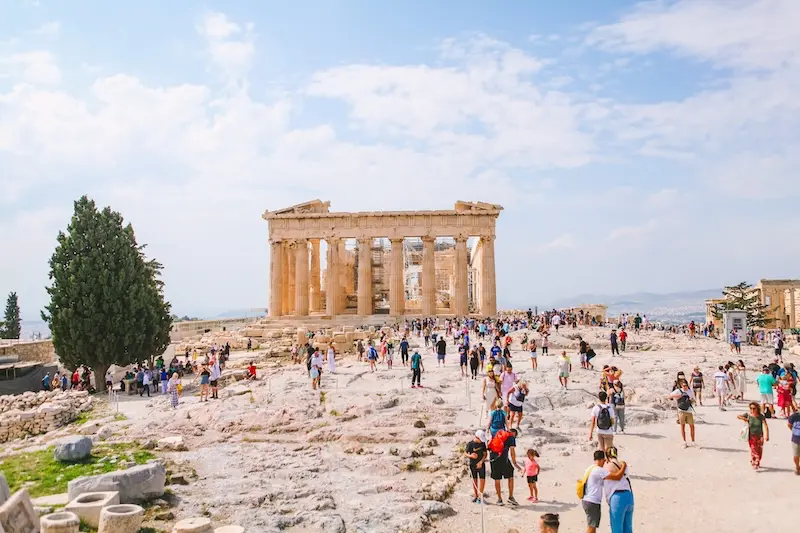
Visiting the Acropolis, requires careful preparation for your visit, in particular by reviewing the main information concerning the site. We have therefore listed some important points for you:
- Your visit will last at least 2 hours, especially if you want to take full advantage of the place!
- The best time to visit the Acropolis of Athens is to go early in the morning (you will avoid not only the crowds but also the high temperatures during the summer months) or to arrive late in the afternoon, shortly before closing.
- Concerning accessibility, there are toilets for people with reduced mobility, an elevator, and a lift (max 160kgs).
- Pets are not accepted on the site
- Visitors will only be allowed to enter the archaeological site with small backpacks and handbags.
To visit the Acropolis in Athens, we recommend taking a guide in order to know everything about the site, the context in which the monuments were built, the history of Athens, Greek mythology, and developments over time.
Check out these guided tours:
You will discover, for example, that the Doric columns of the Parthenon are not straight and rectilinear, but convex. Also, its lines which intersect at right angles are not straight, but curved: this testifies to the civil genius of the Greek architects, who understood the laws of optics and geometry, as well as the interpretation capacities of the brain human.
You will also discover how the Greeks were able to assemble the immense and heavy blocks of marble to form columns and drums which would remain standing or almost for nearly 2500 years.
4. How to get to the Acropolis in Athens?

- On foot: If you are staying in Athens, you can easily get to the rock: the Acropolis in Athens is a 15-minute walk from Syntagma Square.
- By metro: By metro, you have to stop at the “Acropoli” station of line 2, the red line. Head down Dionysiou Areopagitou Street to find the main entrance to the site. But this entrance promises to be crowded at any time of the day. Please note that there is a way to enter the site, through the Theater of Dionysus, a much less frequented entrance.
- By bus: With lines 1, 5, 15, 040, 230
5. How much is the entrance to the Acropolis?
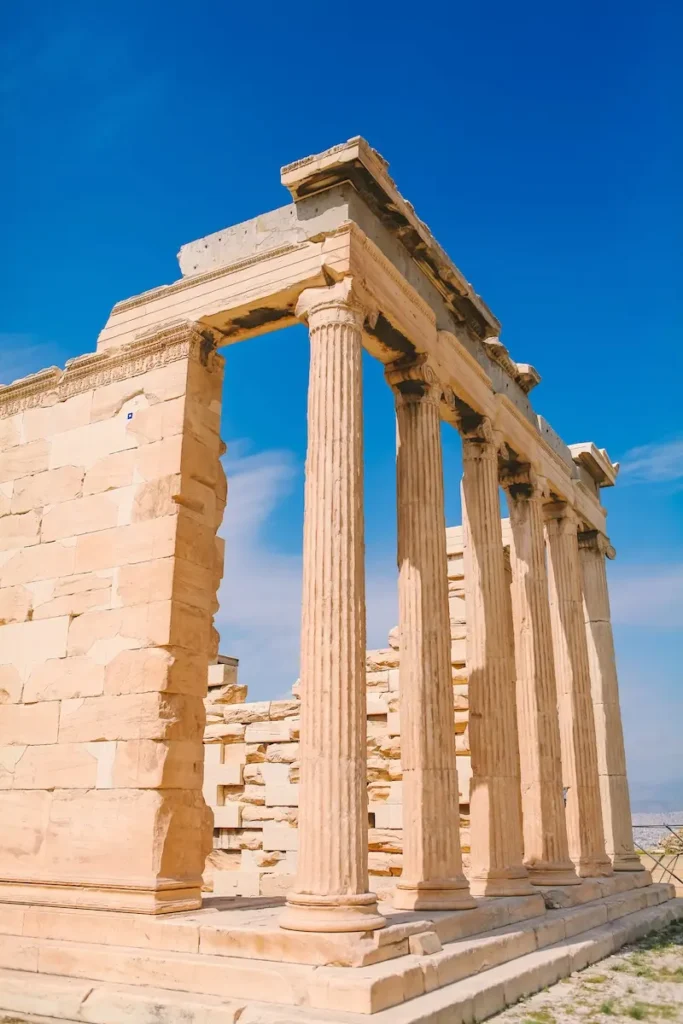
There are two options for purchasing a ticket: on site, at the ticket office (but watch out for the queue!), or online by reserving a skip-the-line ticket.
The prices are:
- Full price single ticket: €22 in summer (from April 1 to October 31) and €10 in winter (from November 1 to March 31)
- Reduced single ticket: €10
- Full price combined ticket (entries to the Acropolis, the Ancient Agora, Keiramikos, Hadrian’s Bookstore, the Roman Agora, Olympion and Aristotle’s Bookstore): €30
- Reduced combined ticket: €15

Buy Your Tickets Online:
Good to know :
When you buy your tickets to the Acropolis, you need to select a specific time when to enter. You can only enter when it’s your time, as indicated on your ticket. As we arrived early, we tried to scan our tickets but it didn’t work!
6. The Acropolis Museum
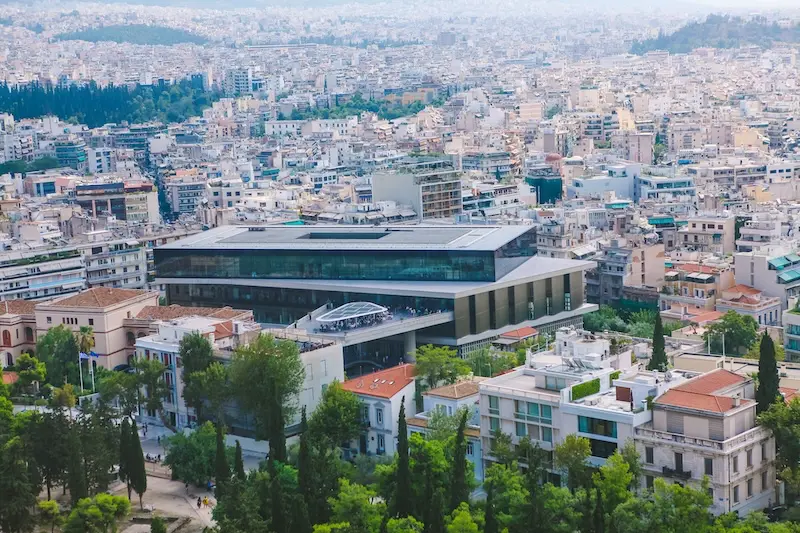
If you only have time for 1 Museum in Athens, then opt for the fabulous Acropolis Museum. It is located at the foot of the Acropolis. It is a glass case inaugurated in 2009 which houses the treasures of the Acropolis.
The scenography is particularly successful and the museum is spacious allowing you to move freely between the artworks. It is a museum that can be visited with children.
On the first floor, you will discover the five caryatids, these statues of women that support the Erechtaion (the sanctuary built on the most sacred part of the Acropolis). These are the original statues that are on display (those that we see on the Acropolis are reproductions).
Don’t miss the exceptional view from the top floor: a transparent panorama facing the Acropolis. This top floor, the Parthenon Gallery, is ingeniously designed to replicate the temple’s magnificent frieze, using cast copies of the sections currently housed in the British Museum (80 meters), the block which is in the Louvre and other scattered fragments in other collections.
Entrance to the museum is €10 in high season and €5 during low season. Tickets can be purchased at the museum entrance, on the Acropolis Museum website and on GetYourGuide.
7. Don’t miss the Areopagus Hill!

Before entering the Acropolis of Athens, we highly recommend a small stop at the Areopagus Hill, for one of the most beautiful panoramic view of the city, including the Acropolis and the Agora. This hill is a symbol of the city’s rich historical and cultural past. It encapsulates stories of mythology, law, philosophy, and early Christian history (and it’s free).
Areopagus Hill, also known as Mars Hill, is a prominent rock located right by the entrance of the Acropolis. The name Areopagus itself means “Ares’ Rock” in Greek, stemming from the myth that Ares (the god of war, known as Mars to the Romans) was tried here by the gods for the murder of Poseidon’s son Alirrothios.
In ancient times, the Areopagus was the site of the council of elders of the city, similar to the Roman Senate. This council, known as the Areopagus council, was responsible for lawmaking. It played a crucial role in the city’s administration, overseeing matters of law, morality, and justice, particularly in murder cases.
8. Our Final Thoughts

Visiting the Acropolis of Athens was for us one of the main highlights during our travels in Greece.
As you stand on the sacred rock, you’re not just visiting a collection of ancient buildings; you’re stepping into a nexus of history where democracy, philosophy, art, and religion intersected in ways that shaped Western civilization.
A visit to the Acropolis is also a journey into the heart of mythology, where gods and heroes walked the earth. It’s an opportunity to reflect on the ideals of beauty, harmony, and democracy that emerged from this very spot and continue to influence us today.






